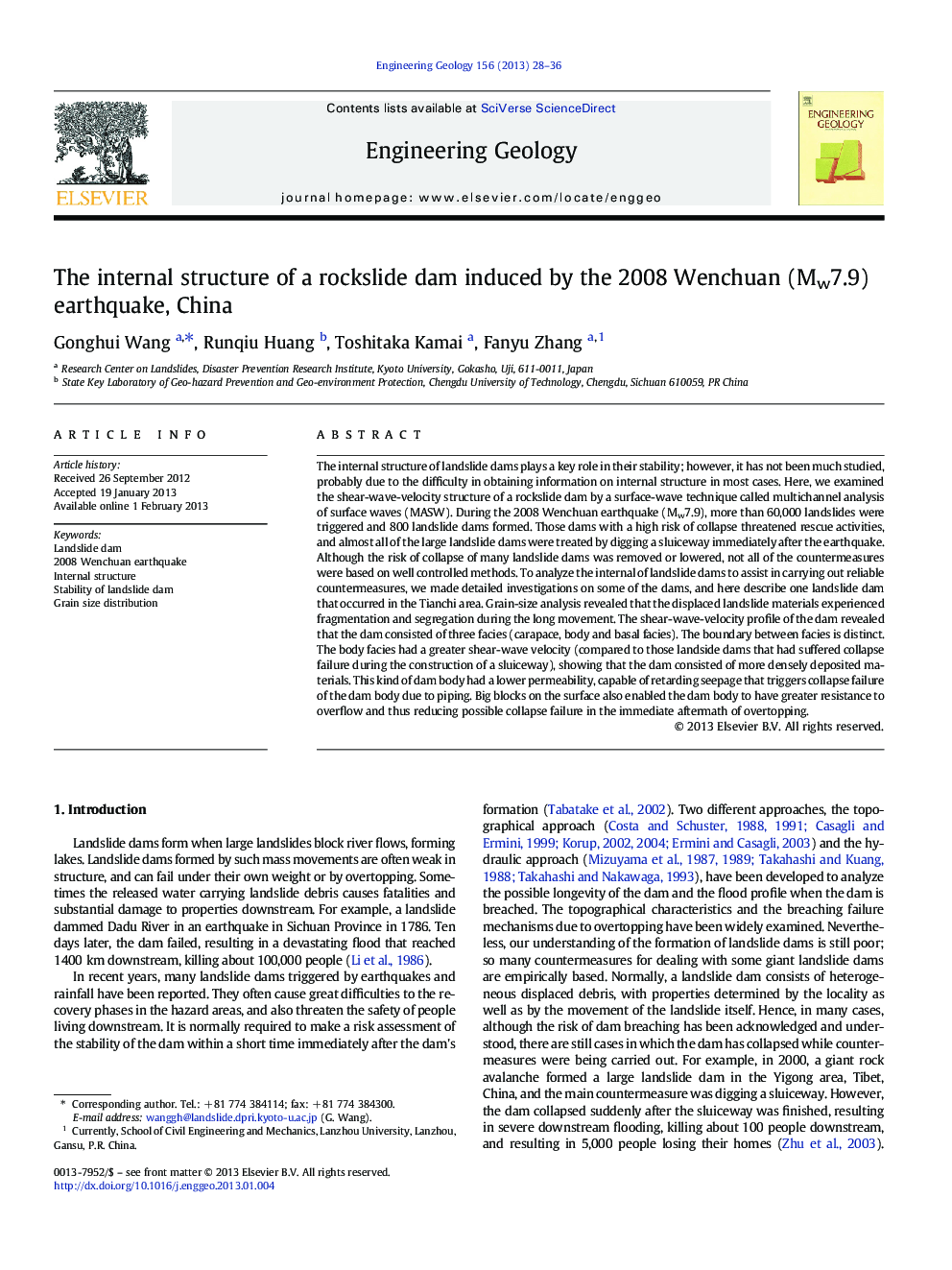| کد مقاله | کد نشریه | سال انتشار | مقاله انگلیسی | نسخه تمام متن |
|---|---|---|---|---|
| 4743733 | 1641828 | 2013 | 9 صفحه PDF | دانلود رایگان |

The internal structure of landslide dams plays a key role in their stability; however, it has not been much studied, probably due to the difficulty in obtaining information on internal structure in most cases. Here, we examined the shear-wave-velocity structure of a rockslide dam by a surface-wave technique called multichannel analysis of surface waves (MASW). During the 2008 Wenchuan earthquake (Mw7.9), more than 60,000 landslides were triggered and 800 landslide dams formed. Those dams with a high risk of collapse threatened rescue activities, and almost all of the large landslide dams were treated by digging a sluiceway immediately after the earthquake. Although the risk of collapse of many landslide dams was removed or lowered, not all of the countermeasures were based on well controlled methods. To analyze the internal of landslide dams to assist in carrying out reliable countermeasures, we made detailed investigations on some of the dams, and here describe one landslide dam that occurred in the Tianchi area. Grain-size analysis revealed that the displaced landslide materials experienced fragmentation and segregation during the long movement. The shear-wave-velocity profile of the dam revealed that the dam consisted of three facies (carapace, body and basal facies). The boundary between facies is distinct. The body facies had a greater shear-wave velocity (compared to those landside dams that had suffered collapse failure during the construction of a sluiceway), showing that the dam consisted of more densely deposited materials. This kind of dam body had a lower permeability, capable of retarding seepage that triggers collapse failure of the dam body due to piping. Big blocks on the surface also enabled the dam body to have greater resistance to overflow and thus reducing possible collapse failure in the immediate aftermath of overtopping.
► The shear-wave profile of a rockslide dam was configured on the first time.
► Three facies of the rockslide dam were identified through the shear-wave profile.
► Segregation phenomenon occurred within the displaced debris.
► Stability of this rockslide dam was analyzed.
Journal: Engineering Geology - Volume 156, 1 April 2013, Pages 28–36